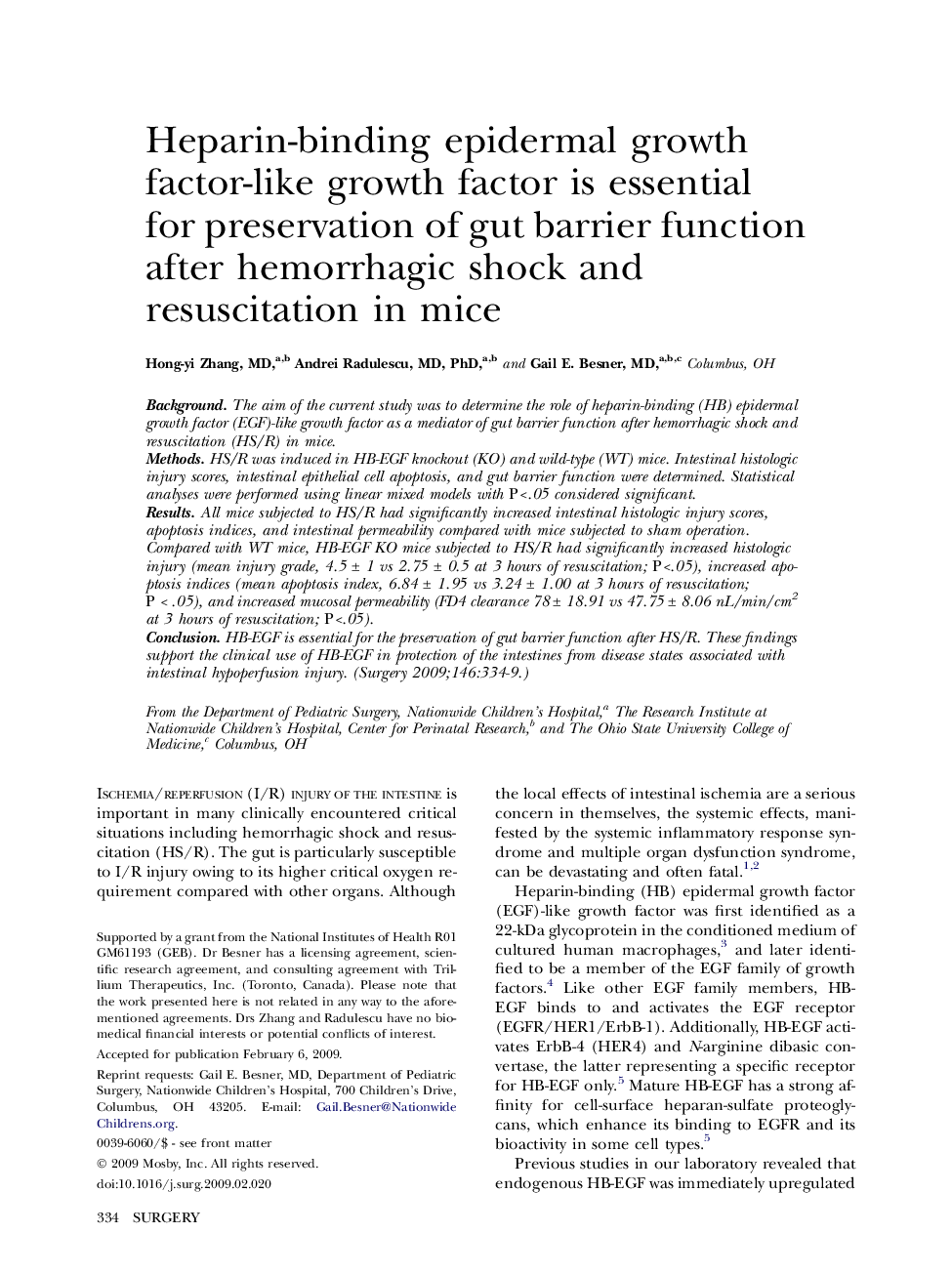| Article ID | Journal | Published Year | Pages | File Type |
|---|---|---|---|---|
| 4309401 | Surgery | 2009 | 6 Pages |
BackgroundThe aim of the current study was to determine the role of heparin-binding (HB) epidermal growth factor (EGF)-like growth factor as a mediator of gut barrier function after hemorrhagic shock and resuscitation (HS/R) in mice.MethodsHS/R was induced in HB-EGF knockout (KO) and wild-type (WT) mice. Intestinal histologic injury scores, intestinal epithelial cell apoptosis, and gut barrier function were determined. Statistical analyses were performed using linear mixed models with P<.05 considered significant.ResultsAll mice subjected to HS/R had significantly increased intestinal histologic injury scores, apoptosis indices, and intestinal permeability compared with mice subjected to sham operation. Compared with WT mice, HB-EGF KO mice subjected to HS/R had significantly increased histologic injury (mean injury grade, 4.5 ± 1 vs 2.75 ± 0.5 at 3 hours of resuscitation; P<.05), increased apoptosis indices (mean apoptosis index, 6.84 ± 1.95 vs 3.24 ± 1.00 at 3 hours of resuscitation; P < .05), and increased mucosal permeability (FD4 clearance 78 ± 18.91 vs 47.75 ± 8.06 nL/min/cm2 at 3 hours of resuscitation; P<.05).ConclusionHB-EGF is essential for the preservation of gut barrier function after HS/R. These findings support the clinical use of HB-EGF in protection of the intestines from disease states associated with intestinal hypoperfusion injury.
